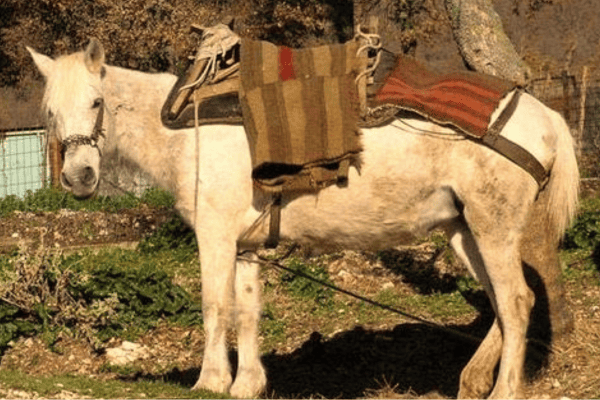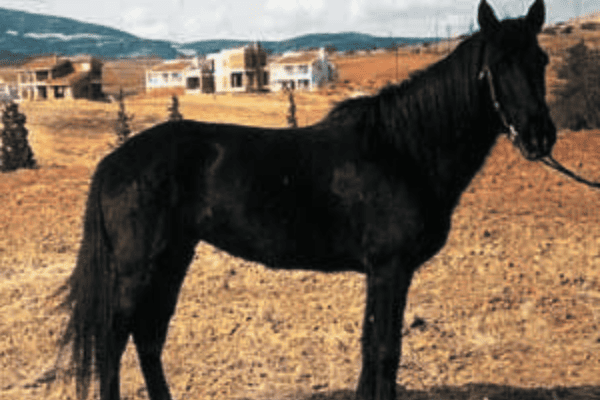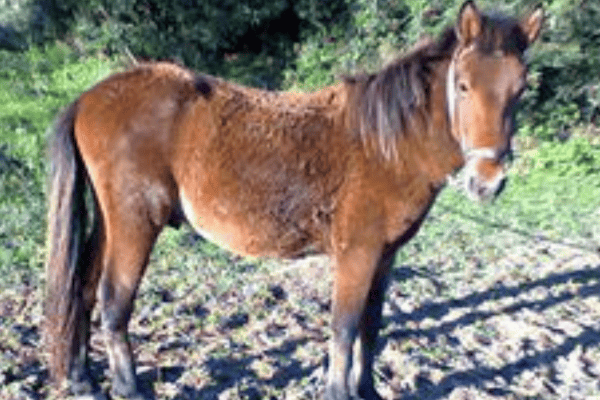The Pindos Pony, an emblematic equine breed of Greece, traces its roots to the ancient, mountainous regions of the Pindos range. Cultivated by the region’s early inhabitants, these ponies are distinguished by their robust constitution and exquisite appearance. Their impressive endurance and adept climbing skills are a testament to their adaptation to the harsh mountainous environment.
Serving multifaceted roles, the Pindos Pony has been integral in tasks ranging from riding and transportation to agricultural activities and harness work for transporting goods. Their small yet sturdy build also makes them excellent candidates for mule breeding, highlighting their versatility and enduring value in various equine-related endeavors.
History:
The Pindos Pony, an equine breed with a distinguished pedigree, hails from Greece’s rugged Pindus region in Epirus and Thessaly. Though their exact lineage remains obscure, these hardy horses remain fascinating due to historical uncertainties about their lineage and ancestry. Characterized by sure-footedness, adaptability, and robust constitution – they thrive under harsh environments of their native terrain.
Pindos Ponies may lack clarity regarding their bloodline, yet have characteristics which suggest an Asian origin. One such possible ancestor could be Old Thessalonian horses cultivated by ancient Greeks but now lost to history; this theory emphasizes how horses have always played an integral part of Greek culture.
Additionally, these ponies may be descended from Oriental horse breeds brought to Greece by early Scythian settlers renowned for their exceptional horsemanship.
This fact not only enriches their history narrative, but it also represents how equine evolution is impacted by numerous cultures and civilizations in Greece – thus becoming a symbol of its longstanding legacy and complex mosaic of equine history.
Physical Characteristics:
Size and Build: Standing at an average height of around 12 to 14 hands (48 to 56 inches), Pindos Ponies are small but robust. They have a strong, compact body, well-suited for navigating difficult terrains.
Coat and Color: Their coats are usually thick, to protect them from harsh weather conditions, with common colors being bay, chestnut, and sometimes grey or black.
Temperament and Abilities:
Temperament: Pindos Ponies are known for their calm yet friendly temperament, making them excellent choices for children as well as novice riders starting out in horseback riding.
Mountain Adaptation: Horses have developed hooves and legs which are perfectly tailored to the uneven terrain of the Pindos Mountains, enabling them to navigate trails confidently.

Conservation and Modern Use
Conservation Status: Over recent years, this breed has come close to extinction due to modernization and decreased traditional farming practices.
Current Uses: Conservation efforts have led to their use in ecotourism, providing visitors with an unforgettable way to explore Greece’s beautiful countryside. Furthermore, their gentle temperament has proven popular for therapeutic riding programs.
Cultural Significance:
Symbol of Greek Heritage: The Pindos Pony is not just an animal breed but a symbol of Greek rural life and heritage. They embody the resilience and adaptability of life in the Greek mountains.
Festivals and Celebrations: In some regions, these ponies are celebrated in local festivals, where their role in Greek history and culture is honored.



